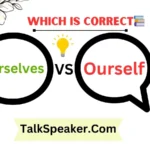Colors have fascinated and influenced human culture for centuries. Among the vast spectrum of hues, Indigo v Violet, and purple often come up in discussions about color differentiation.
Although they might appear similar to the untrained eye, these colors have distinct characteristics, historical significances, and uses.
In this blog post, we will explore these colors in-depth, uncover their scientific and artistic nuances, and provide practical tips for identifying and using them effectively.
Understanding the Spectrum: Violet, Indigo, and Purple
Violet, indigo, and purple are colors located on the visible spectrum of light, but each occupies a unique position and has different properties.
- Violet: This color has the shortest wavelength of visible light, ranging from approximately 380 to 450 nanometers. Violet is a primary color in the spectrum, often associated with the highest frequency of light.
- Indigo: Indigo lies between blue and violet on the spectrum, with wavelengths around 450 to 475 nanometers. It is a deep blue with hints of violet.
- Purple: Unlike violet and indigo, purple is not a spectrum color but a combination of red and blue. It does not have a specific wavelength but is perceived as a secondary color in the color wheel.
Color Theory and Perception
The way we perceive colors involves the interaction of light with the human eye. Light waves enter the eye and are interpreted by the brain, creating the sensation of color.
- Violet appears as a result of the highest frequency light waves.
- Indigo has a slightly lower frequency than violet but higher than blue.
- Purple is created by mixing red and blue light or pigments, leading to a range of hues depending on the ratio of red to blue.
Historical Significance and Usage
Colors often carry historical and cultural significance, and violet, indigo, and purple are no exceptions.
Violet
- Historical Use: Violet dye was rare and expensive in ancient times, often made from the murex shellfish. Its rarity made it a symbol of nobility and luxury.
- Cultural Symbolism: In many cultures, violet represents spirituality, creativity, and wisdom.
Indigo
- Historical Use: Indigo dye was historically derived from the indigo plant. It became a major trade commodity in the 17th and 18th centuries.
- Cultural Symbolism: Indigo is associated with deep thought and contemplation, often used in religious and spiritual contexts.
Purple
- Historical Use: Purple dye, particularly Tyrian purple, was prized in ancient Rome and Byzantium. It was often reserved for royalty and high-ranking officials.
- Cultural Symbolism: Purple signifies power, wealth, and status across various cultures.
The Royal Color: Purple Through the Ages
Purple has been linked with royalty and power for centuries.
- Ancient Rome: The Romans valued purple highly, using it to signify imperial status. Only emperors and certain high officials were allowed to wear purple robes.
- Byzantine Empire: The color continued to represent authority and exclusivity, often used in religious art and ceremonial attire.
The significance of purple in historical contexts highlights its association with wealth and high status.
Artistic Perspectives: Violet, Indigo, and Purple
In art and culture, violet, indigo, and purple have been used to convey different meanings and emotions.
In Art
- Violet: Often used to evoke a sense of mystery or spirituality, violet is a favorite among artists seeking to create depth and complexity.
- Indigo: Known for its deep, calming effect, indigo is used to bring a sense of tranquility and introspection to artworks.
- Purple: Purple’s versatility makes it a popular choice for conveying luxury, nobility, and creativity.
Cultural Representation
- Violet and Indigo: Found in many cultural artworks, from traditional textiles to modern design.
- Purple: Used extensively in royal portraits and religious paintings to signify divine or noble figures.
Scientific Perspectives: How We Perceive These Colors
Understanding color perception helps in distinguishing violet, indigo, and purple.
Color Vision
The human eye contains cone cells that are sensitive to different wavelengths of light. The brain processes these signals to produce the sensation of color.
- Violet: Perceived through the highest wavelength of visible light.
- Indigo: Perceived through slightly longer wavelengths than violet.
- Purple: Created through the combination of red and blue wavelengths.
Color Blindness
Color blindness can affect how these colors are perceived. For individuals with certain types of color blindness, differentiating between violet, indigo, and purple can be challenging.
Color Mixing: Creating Shades and Tones
Mixing colors is crucial for artists and designers looking to achieve the desired hue.
Mixing Techniques
- Violet: Can be created by mixing blue with a small amount of red.
- Indigo: Achieved by blending blue with a touch of violet.
- Purple: Produced by combining red and blue in various ratios.
Role of Ratios
The exact shade of violet, indigo, or purple depends on the ratios of red to blue and the specific pigments used.
Practical Tips for Differentiation
Accurately distinguishing between violet, indigo, and purple can be tricky. Here are some practical tips:
- Use a Color Wheel: A color wheel can help visualize the differences between these colors and their relationships.
- Lighting Conditions: View colors under natural light to get the most accurate perception.
- Digital Tools: Color picker tools in graphic design software can help in identifying and matching these colors precisely.
Color in Nature: Examples and Influences
Colors are not just abstract concepts but also appear prominently in nature.
Violet in Flora
- Lavender: Known for its calming scent and vibrant violet flowers.
- Orchids: Many species exhibit shades of violet.
Indigo in Textiles
- Historical Significance: Indigo was used in ancient textiles, including denim.
- Modern Uses: Continues to be a popular dye in fashion and home décor.
Rainbows
- Display: Rainbows showcase a spectrum of colors, including violet and indigo, demonstrating the natural dispersion of light.
Color Influences: Mood, Fashion, and Design
Colors can influence emotions and are used strategically in fashion and design.
Psychological Effects
- Violet: Associated with creativity and tranquility.
- Indigo: Linked to calmness and introspection.
- Purple: Evokes luxury and sophistication.
Fashion and Design
- Violet and Indigo: Popular in design for creating calming and contemplative spaces.
- Purple: Often used in branding and high-end fashion to convey prestige and elegance.
Conclusion
Understanding the differences between violet, indigo, and purple is more than just a matter of aesthetics; it encompasses historical significance, scientific principles, and practical applications. By delving into these aspects, you can gain a deeper appreciation for these colors and their roles in art, culture, and daily life.
For more information on color theory and practical tips on using these colors, check out the following resources:
- Color Theory Basics
- Historical Uses of Purple Dye
Whether you’re an artist, designer, or just a color enthusiast, knowing the nuances of violet, indigo, and purple can enhance your understanding and application of these beautiful hues.

Amelia Harris, a passionate educator, simplifies English grammar and vocabulary for learners of all levels. With her engaging style, mastering English has never been easie




